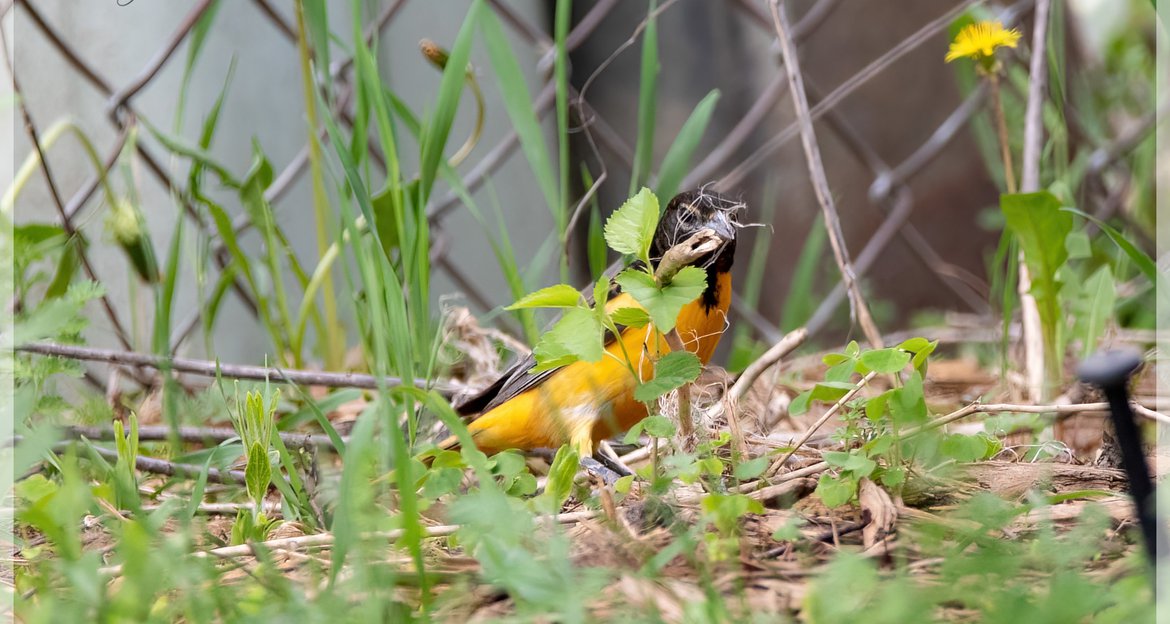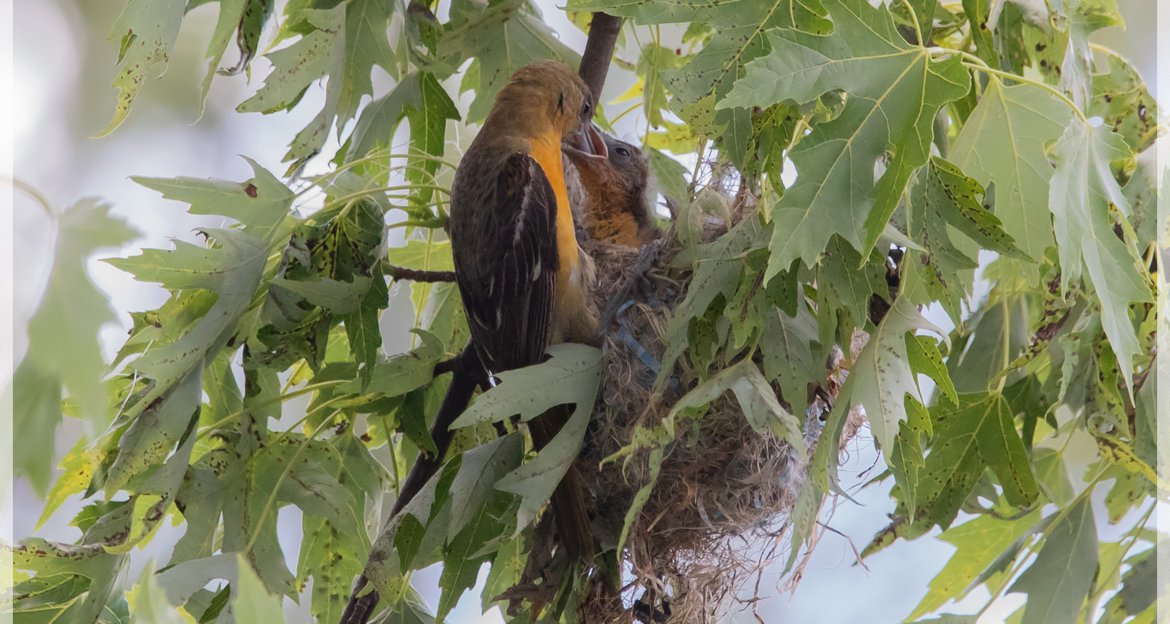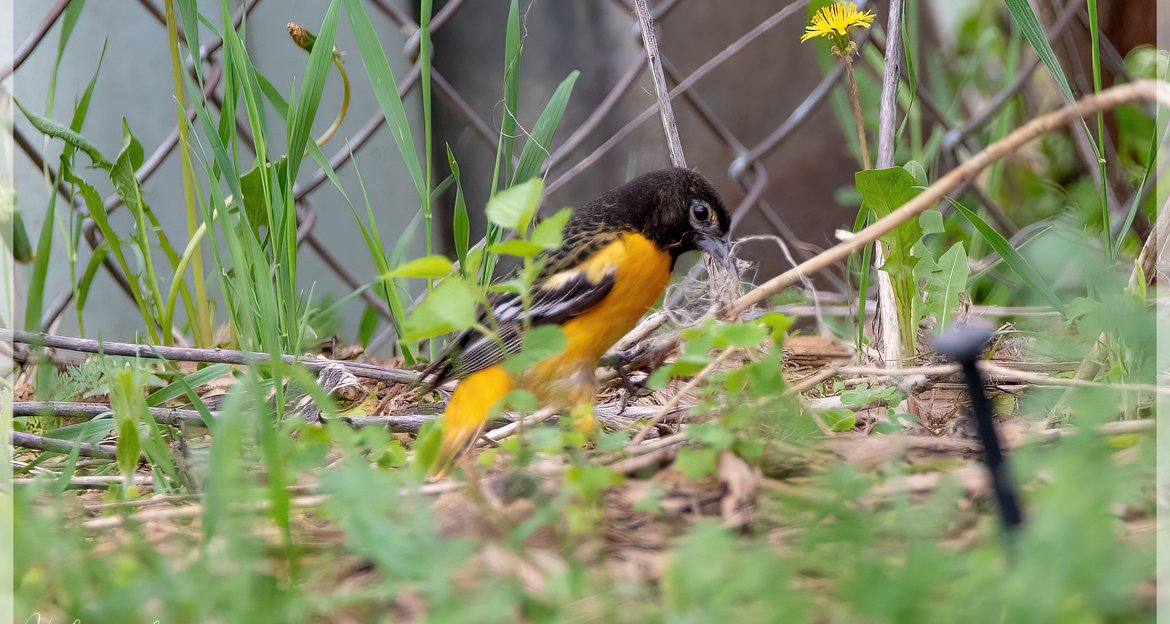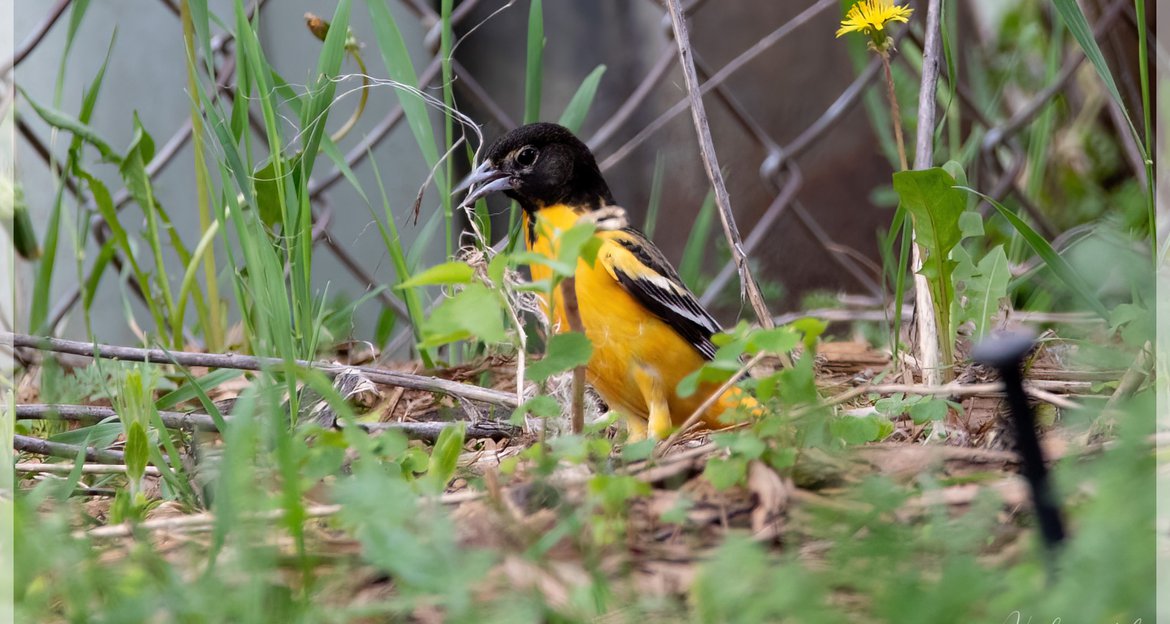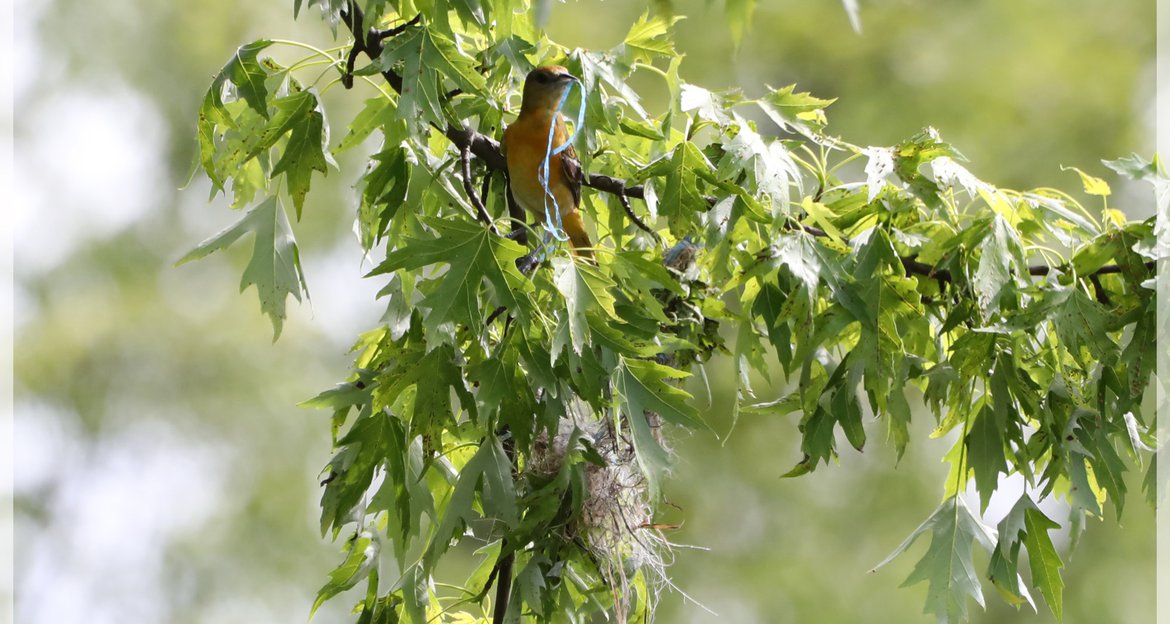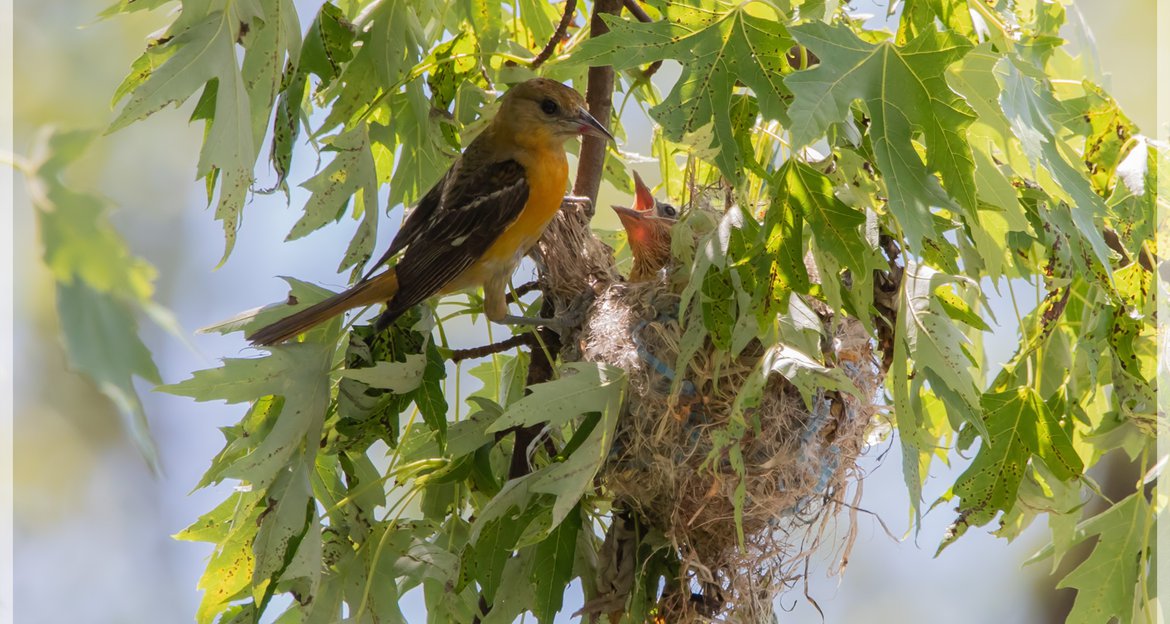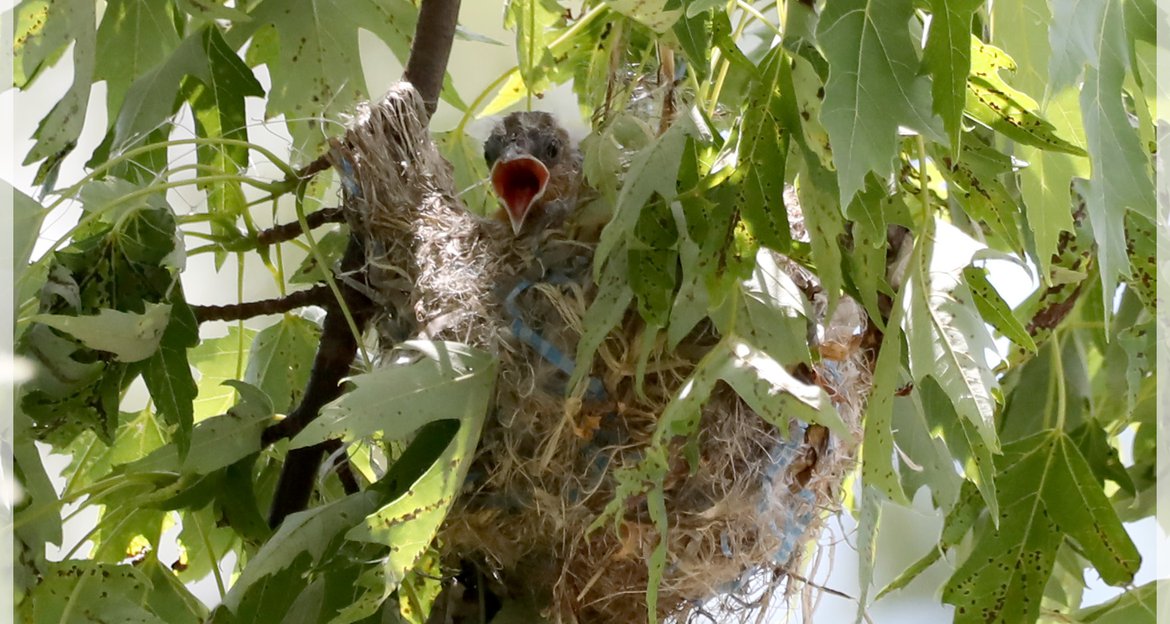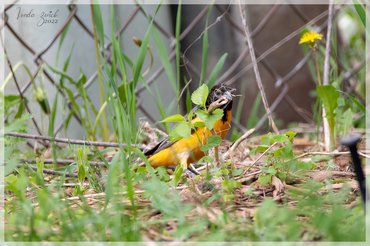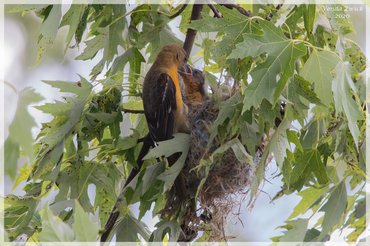Plant Milkweed for the Orioles?!?
Posted by Vonda on May 17, 2022
Everyone knows that planting milkweed is good for the Monarch butterfly. But did you know that milkweed is beneficial in other ways? In addition to feeding monarch caterpillars and to being a great plant for pollinators, milkweed fibers are particularly suited to being used in the construction of oriole nests.
Many of us put out grape jelly, nectar, and/or oranges to attract orioles as they arrive from further south during their migration. Often, they stick around for a few weeks and then disappear for the rest of the season. Sometimes, they head further north. Other times, they stick around to breed. Once they go into breeding mode, their diet switches to a primarily insectivorous one and they often stop returning to feeders at that point.
If you are fortunate enough to entice the orioles to breed nearby, then they may continue to visit feeders, albeit less frequently. Orioles need three things in order to stick close by and breed:
- They are tree nesters, so they need suitable trees nearby to build their nests in.
- They need quality food sources to feed their young (and jelly, nectar, and oranges don't cut it). They need instead a plentiful supply of insects. Caterpillars/insect larva are one of the most favored foods for feeding chicks in the nest. Native trees, shrubs, forbs, and grasses evolved alongside native insects and are essential for sourcing sought after larva. Native plants also often attract a wide array of pollinators and insects that feed on pollinators and these also provide good sources of insect protein for growing nestlings. So planting native will ensure a healthy population of insects. Orioles also enjoy fruit, so including fruiting plants like serviceberry, wild grape, raspberries, blueberries, blackberries, and elderberries are also a bonus.
- They need specific nesting materials in order to build their orb-shaped nests. Oriole nests hang from branches rather than rest on top of them. Thus, it is essential they be built with materials that can support the growing chicks and that won't be impacted by adverse weather like rain and wind. Milkweed stalks consist of very strong but flexible fibers that are a perfect material for weaving these intricate nests.
So planting milkweed not only benefits the Monarch butterfly, it also provides essential materials needed for building oriole nests. If there is a good source of milkweed fibers nearby, it greatly increases the odds that orioles will nest nearby. But there is a catch: you have to put off yard cleanup until after the nest-building period is over. This means leaving the stalks up well past normal cleanup dates. The good news is that this is also good for hibernating insects, which often over winter inside the stems of native perennials.
I first noticed a female Baltimore Oriole raiding my Sullivant Milkweed stalks for fibers 3 years ago. That year, the pair nested in a neighbor's tree and it was the first time I had orioles around for the entire season.
The next year, I noticed milkweed fibers being left behind on the oriole feeder. I had Swamp Milkweed stalks directly below the feeder. I set up a trail cam on the milkweed stalks, and captured a female oriole gathering nesting materials from the milkweed. That year, I also saw orioles throughout the season, although I am unsure of the exact location of the nest.
Images in this Post
-
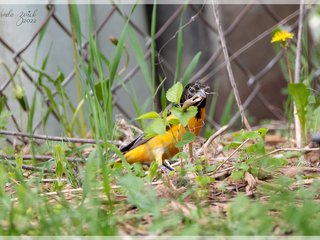
Baltimore Oriole
Gathering milkweed fibers
-
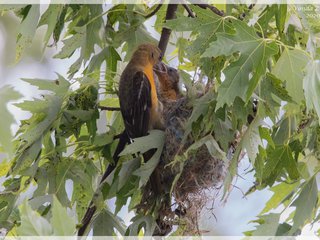
Baltimore Oriole Female
Feeding chicks in the nest
-
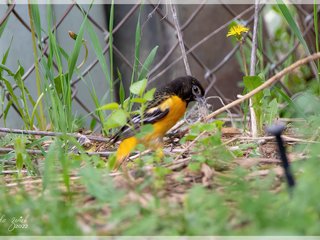
Baltimore Oriole
Collecting milkweed fibers
-
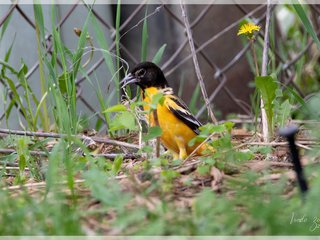
Baltimore Oriole
Collecting milkweed fibers
-
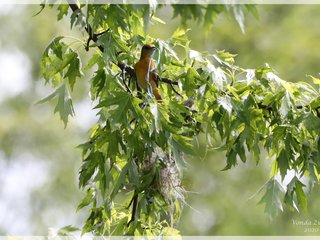
Baltimore Oriole Female
Building a nest
-
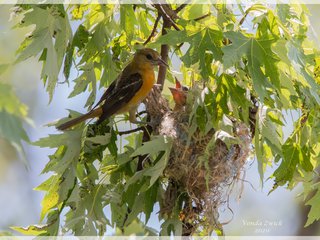
Baltimore Oriole Female
Feeding chicks in the nest
-
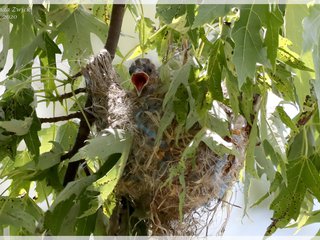
Baltimore Oriole Nestling
None

